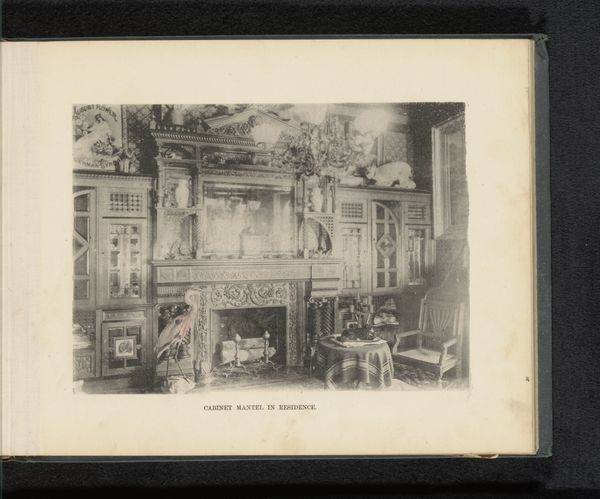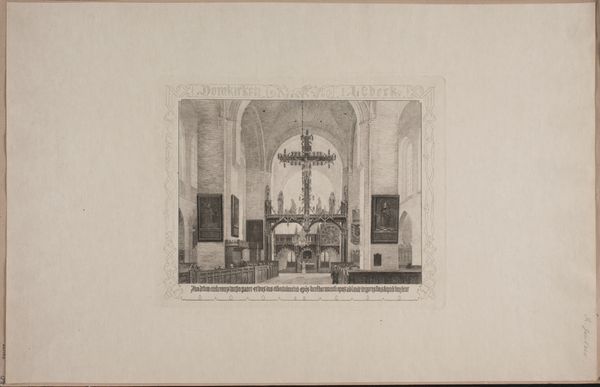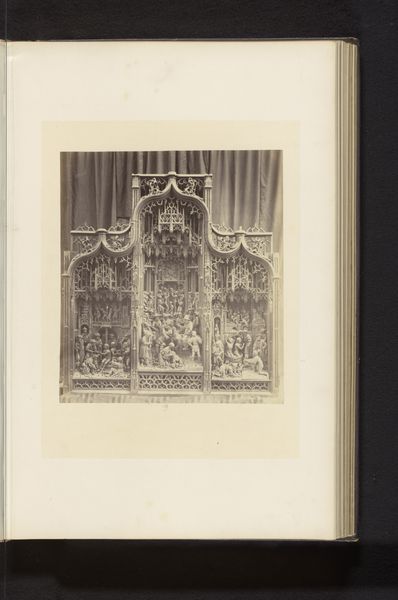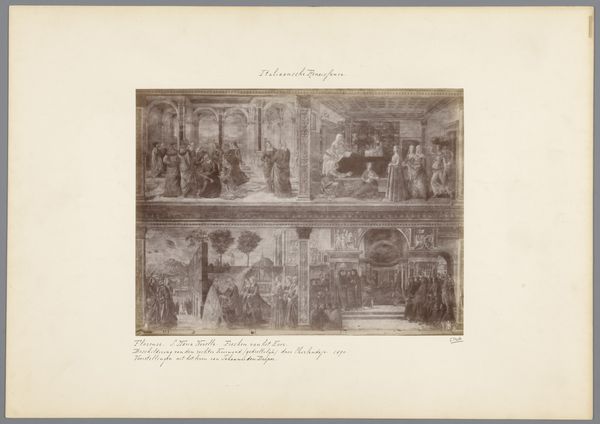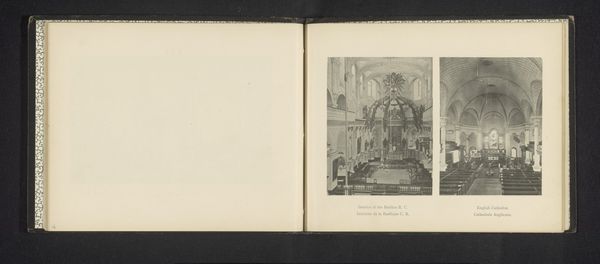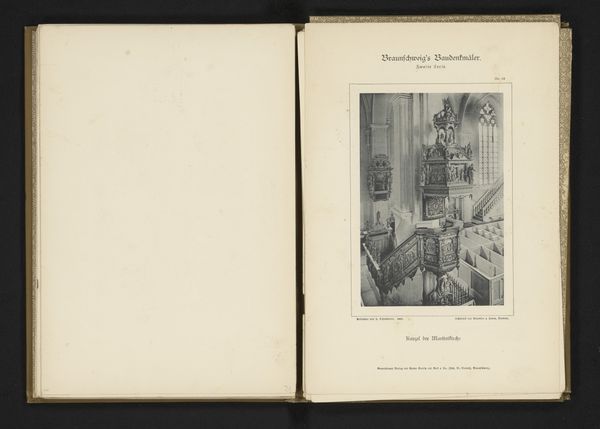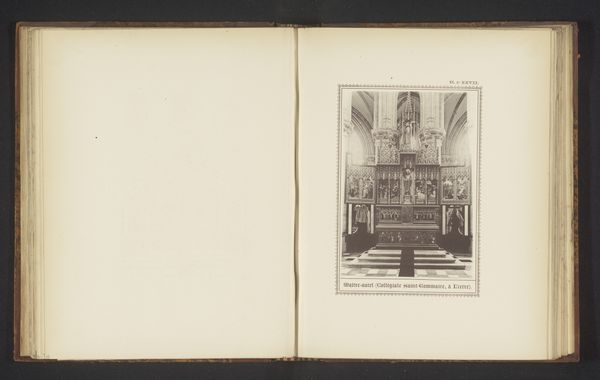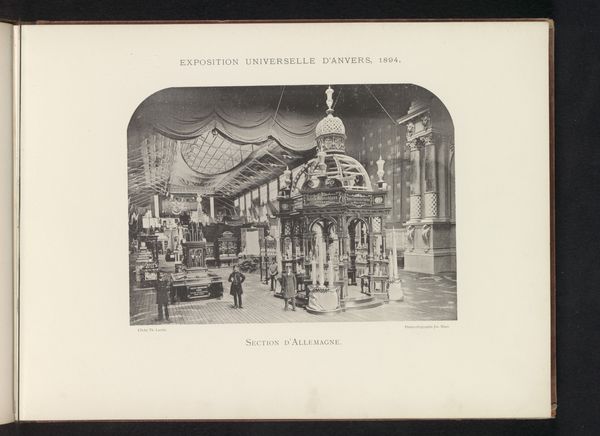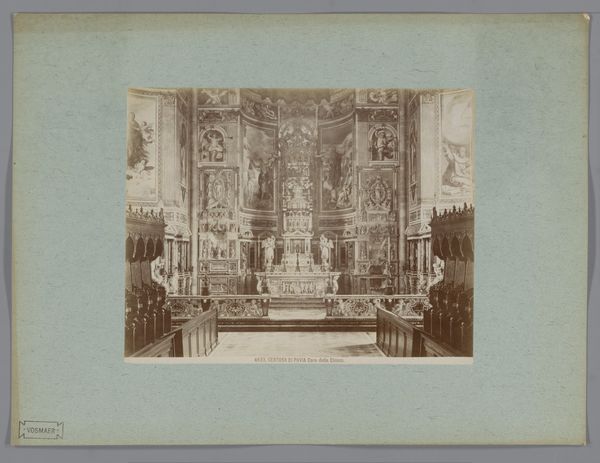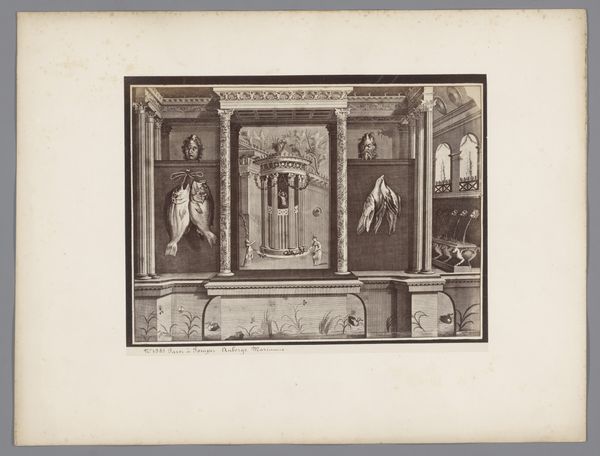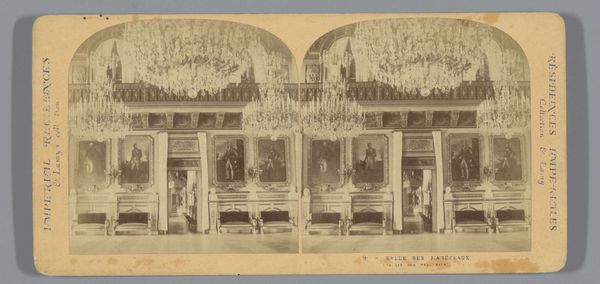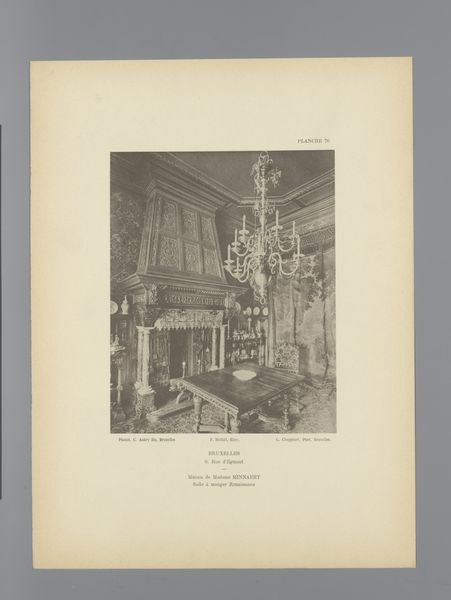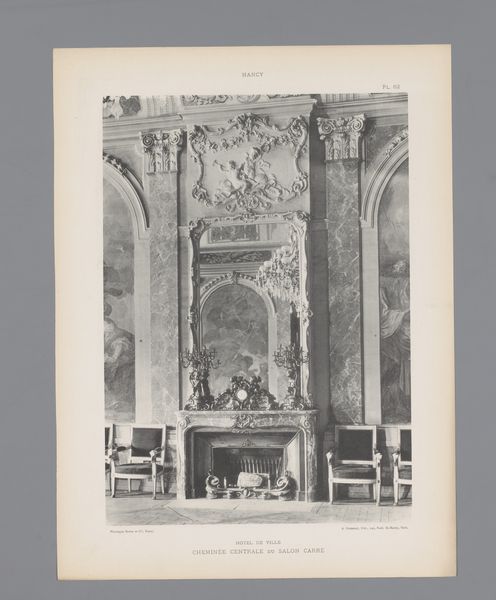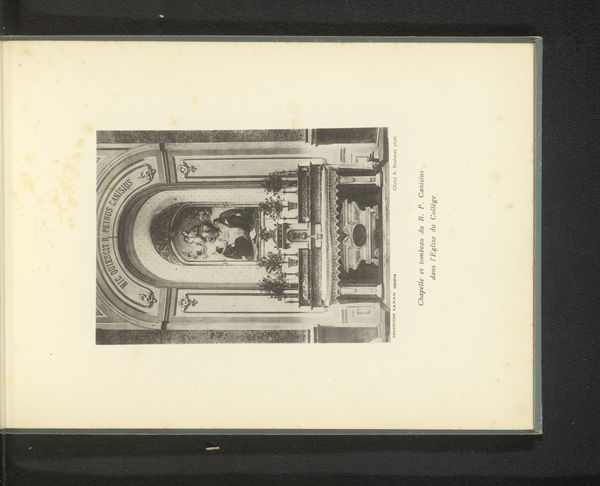
photography, gelatin-silver-print, architecture
#
photography
#
gelatin-silver-print
#
architecture
Dimensions: height 111 mm, width 162 mm
Copyright: Rijks Museum: Open Domain
Curator: Let’s delve into this compelling photograph by Ernest Lorson, titled “Interieur van de L’Eglise des Cordeliers in Fribourg.” It's a gelatin-silver print, dating back to 1897. Editor: Immediately, I’m struck by the sheer density of symbolic ornamentation – banners, draped fabrics, statuary… it feels heavy with meaning. Almost like walking into a stage set prepared for a very specific kind of performance. Curator: Precisely. Lorson captured not just an interior, but a specific moment laden with Catholic symbolism and cultural weight. Look at the altar – it's framed like a theatrical centerpiece, underscoring the Church's role as a site of spectacle and social cohesion. The Cordeliers were Franciscans. Think about the significance of St. Francis as someone closely associated with a humble, pastoral life. But here his teachings have become grand, ornate... institutionalized. Editor: That’s the friction I sense, between the Church’s supposed ideals of simplicity and the visual grandeur on display. Is it a reflection of the specific socio-political moment in Fribourg? The power of religious orders asserting themselves through the built environment? Curator: Absolutely. Fribourg was – and still is – a deeply Catholic canton in Switzerland. In the late 19th century, such elaborate displays visually reinforced Catholic identity. Lorson, through his lens, preserves that very conscious projection of power. See how the photograph, though monochrome, emphasizes the textures and detailed craftsmanship... making it more than just a record of the church's appearance. Editor: It also makes me wonder about the people present, almost hidden within the composition, almost secondary to the architecture and the displays themselves. Were they intended to feel overwhelmed by it all? Curator: Possibly. There's an intended effect – one meant to inspire awe and perhaps reinforce hierarchy. And the choice of black and white itself adds to that sense of austerity, even in the midst of abundance. Think of the symbolism inherent in light and darkness in the Church… Editor: So, it's not merely a picture of a church interior; it’s a study of power, faith, and how architecture is actively shaped to communicate them to a wider society. The image is almost a case study in visual rhetoric. Curator: Precisely, a snapshot frozen in time that speaks volumes about cultural values. I hadn't thought about its "rhetorical" value as you call it. It enriches the photograph even further!
Comments
No comments
Be the first to comment and join the conversation on the ultimate creative platform.
